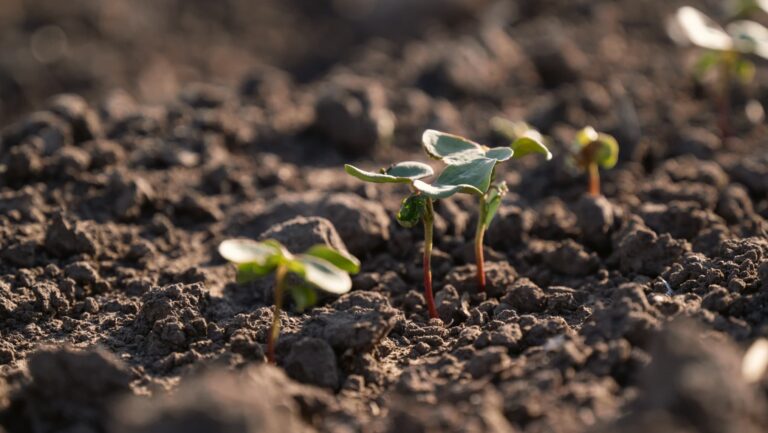Learn How to Reduce Production Costs with These Six Strategies
Amid surging farm production costs, it is critical for American farmers and ranchers to be proactive about finding ways to reduce farm expenses now more than ever.
American farmers and ranchers understand that many factors outside of their control impact their operation’s success. One of the most significant challenges that farmers are currently facing is rising production expenses. Although commodity prices have strengthened over the last year, input costs have also increased substantially.
Production costs have been steadily on the rise for several years. However, supply chain bottlenecks in 2020 and 2021 have amplified this rise in costs for essential supplies like pallets, fertilizer, seeds, and more. According to the September 2021 USDA Farm Income Forecast, total production expenses are expected to increase by 7.3 percent or $26.1 billion, reaching $383.5 billion in 2021. In inflation-adjusted terms, this is the highest production costs have been since 2016.
While you cannot control these prices, you can control your response. To mitigate cost and preserve working capital, factoring in increased production expenses will be crucial when making decisions for your operation. Keep reading to learn more about the current state of surging production costs along with six effective strategies on how to reduce overall cost of production.
Rising Input Costs: Contributing Factors and Effects
Throughout 2020 and 2021, various economic events have contributed to the rise in farm expenses. Some contributing factors include:
- Increasing commodity prices: Although increases in commodity prices benefit the producers that grow them, they can have differing effects for producers such as cattle ranchers who utilize these commodities, such as feed.
- Widespread supply chain shortages: From shortages in farm equipment to shortages in fertilizer and pesticides, constraints on the supply chain are pushing farm expenses up.
- Transportation bottlenecks: Various bottlenecks in transportation this year, including trucking shortages and port closures, have led to increases in shipping costs that translate to higher production expenses.
Both supply chain shortages and transportation bottlenecks have had a significant effect on both the supply and price of important farm inputs this year. In fact, according to a Wall Street Journal economist survey, supply chain and labor shortages pose a greater risk to the economy than COVID-19.
As a result of surging farm input costs, farmers are having to spend a larger share of their working capital on production costs. Therefore, when more working capital goes towards production expenses, less can be utilized for expansion and investing in the growth and evolution of your operation.
Strategies to Reduce Production Costs
Now that you understand why farm production costs are spiking, it is important to focus on what you can control—your response.
“In a commodity industry like crop farming, you have to be a low-cost producer to be successful in the long-run. So cost control is absolutely essential. Determining cost per unit of production and detailing those costs by major category is one way to know which costs are the most important to focus on and attempt to reduce.”
1. Pay Attention to Key Performance Indicators
Before making any decisions on how to reduce production costs, it is important to identify and understand key data points that quantify factors impacting your operation’s financial health. KPIs are used to measure an operation’s success. However, it’s important to recognize that they vary by specific operation. By paying attention to quantitative measurements of your operation’s financial health, you can better understand when and where you need to reduce your farm production costs. In this way, monitoring these indicators contributes to both increased yields and lower overall costs.
2. Be Strategic with Your Seed and Chemical Purchases
Before purchasing seed, pesticides, herbicides, and fertilizers, it’s crucial to conduct research and compare costs and quality between suppliers. Instead of simply choosing the cheapest option, it’s important to investigate online reviews or seek input from the ag community to ensure that the quality of the product still meets your needs.
“Particularly in farming, you have more control over costs than you do over market prices, so time spent on making the best decision on 'buying right' is critical to financial performance.”
Additional Ways to Reduce Seed and Chemical Costs
- Place orders early: Placing orders for these products early and negotiating with suppliers in advance can help secure a good price amidst market volatility.
- Consider generic products: Generic products can be good alternatives that help you save on unnecessary costs.
- Implement integrated pest management techniques: Utilizing these methods to manage pests is a good way to limit fertilizer costs.
3. Invest in Precision Ag Technology
Essentially, precision ag technology is a method that can help you produce more with less. By helping you optimize input purchases, precision ag technology contributes to lower costs. In fact, farmers who use precision ag technology have increased corn yields by 11 percent while reducing operational expenses by nine percent.
Examples of Cost-Saving Precision Ag Technology
- GPS
- variable rate application technology
- drip irrigation systems
- smart cloud databases
- AI technology
Before investing in these technologies, it’s important to realize that what is profitable for one operation may not be for another. Considering economies of scale is essential when making the decision of whether to invest in new technologies. That’s why it’s crucial to choose technology that brings the highest ROI to your unique operation.
4. Prioritize Machinery and Equipment Repairs
While new farm equipment has the potential to yield benefits, it may not be cost-effective for your operation. Plus, supply chain issues have made securing new farm equipment even more difficult. For example, the shortage of semiconductors has placed strain on equipment manufacturers. Before purchasing new equipment, there are various factors to consider that indicate whether or not purchasing new equipment is cost-effective. It can be more beneficial to your balance sheet to postpone machinery upgrades right now and fix existing equipment in anticipation of lower prices in the future.
5. Consider Transitioning from Leasing to Owning Farmland
Renting or leasing farmland incurs additional expenses that increase your overall production costs. According to the USDA, the average rate to rent cropland was $139 per acre in 2020, and it increased to $141 per acre in 2021. Furthermore, cropland cash rents vary by state with states with the highest cash rents including California, Arizona, and Hawaii.
Purchasing farmland can be a strong alternative to renting that not only eliminates expenses for rent but equips you with a stable investment that appreciates over time. In addition, ownership provides more autonomy over how you choose to use your land.
Farmer Begins Land Ownership Journey with AgAmerica
A Mississippi pecan grower who had been farming the same land for years decided to purchase the land he was renting and begin his journey of land ownership. Through AgAmerica’s Accelerate Land Loan Program, he was able to secure a $2MM conventional term loan with a 30-year fixed interest rate that helped him acquire the entirety of the land as well as working capital to support him on his journey.
6. Restructure Debt to Increase Working Capital
Oftentimes, traditional lenders do not understand the unique and diverse needs of farm operations. As a result, these loans do not set farmers up for financial success. Fortunately, restructuring farm debt with a lender who understands the specific needs of your operation can repair a shaky financial foundation. By consolidating existing debt into a new loan with lower payments, you can increase your working capital to invest in operational upgrades and improvements. In addition, consolidating multiple debts into one loan is easier to keep track of and manage. To achieve this, AgAmerica’s flexible loan spectrum offers farmers the option to refinance existing loans and secure immediate liquidity for their operational needs.
Veteran Farmer Returns to AgAmerica to Refinance Existing Loan and Lower Payments
A multigenerational farmer and military veteran returned to AgAmerica to refinance a portion of his existing loan. In doing so, he was able to reduce payments for a portion of his loan by nearly two percent while maintaining interest-only payments on the other portion while he continued to recover from financial hardship.
Strengthen the Financial Power of Your Operation with AgAmerica
We understand that American farmers and ranchers face many challenges that are outside of their control. At AgAmerica, we provide a financial safety net so you can focus on what you can control. Whether you want to increase your working capital to offset rising production expenses, refinance your existing loans to lower payments, or embark on a new journey of farmland ownership—AgAmerica has a solution. Our partnerships with farmers across the nation are helping to create a thriving financial foundation that can withstand the test of time.
Contact us today to learn more about AgAmerica’s flexible loan programs.






